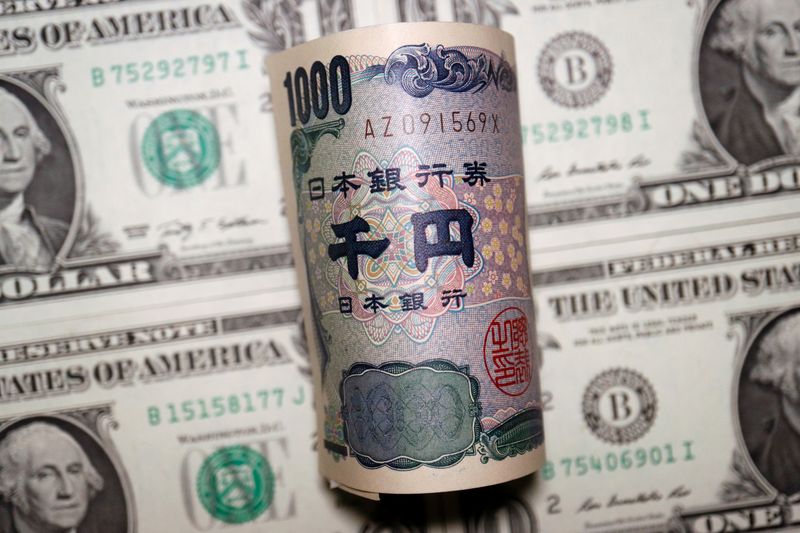
Regional currencies were nursing overnight losses after several Federal Reserve members said that more work was needed to achieve the bank’s 2% annual inflation target, while GDP data underscored resilience in the U.S. economy.
But the dollar fell slightly in Asian trade amid pressure from a sharp rise in the Japanese yen.
The yen firmed 0.6% against the dollar after BOJ member Hajime Takata said on Thursday that the central bank should consider an exit from its ultra-loose policies.
Takata called for an end to the BOJ’s yield curve control and negative interest rates, citing progress towards achieving the central bank’s 2% inflation target.
Takata’s comment fueled speculation that the central bank will raise interest rates by as soon as April- a notion that was already in play after stronger-than-expected consumer price index inflation data released earlier this week.
But other economic readings for January- specifically retail sales and industrial production– still painted a middling picture of the Japanese economy, which had unexpectedly fallen into recession in the fourth quarter.
Economic weakness could potentially delay an early pivot by the BOJ.
Other Asian currencies moved in a flat-to-low range on Thursday.
The Australian dollar rose 0.4%, recovering sharply from steep losses in the prior session after softer-than-expected inflation data. Underwhelming retail sales data on Thursday furthered bets that the Reserve Bank will have little cause to keep raising interest rates.
The Indian rupee was flat, with focus turning to GDP data for the December quarter, which is expected to show some cooling after two years of stellar Indian economic growth.
The Chinese yuan tread water ahead of key purchasing managers index data due on Friday, which is expected to offer more cues on Asia’s biggest economy.
The South Korean won and Singapore dollar both moved sideways.
The dollar index and dollar index futures both fell 0.1% in Asian trade, coming under pressure from a strong yen.
Focus was squarely on PCE price index data- the Fed’s preferred inflation gauge, which is due later on Thursday and expected to reiterate that inflation remained sticky in January.
A chorus of Fed officials said the central bank was in no hurry to begin cutting interest rates, citing concerns over sticky inflation.
Fed officials John Williams and Raphael Bostic both said on Wednesday that more work was needed to meet the Fed’s 2% annual inflation target.
To read the full article, Click Here
